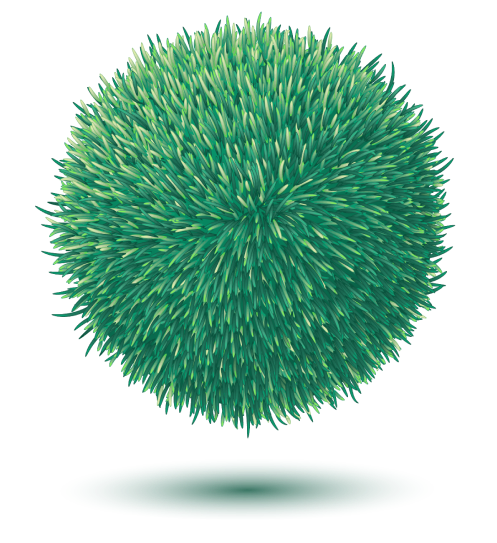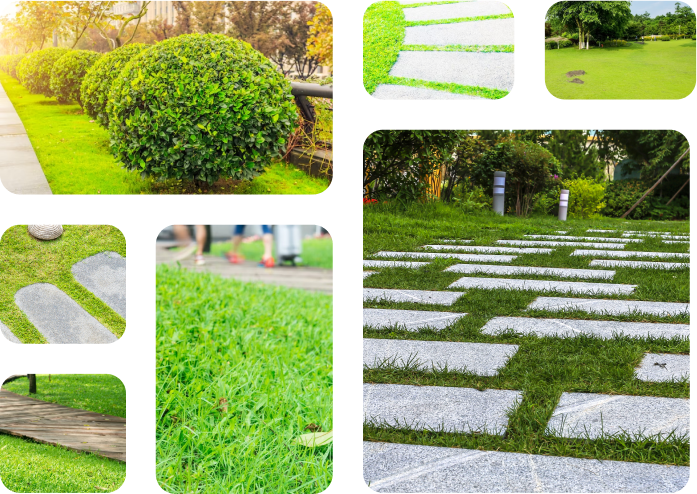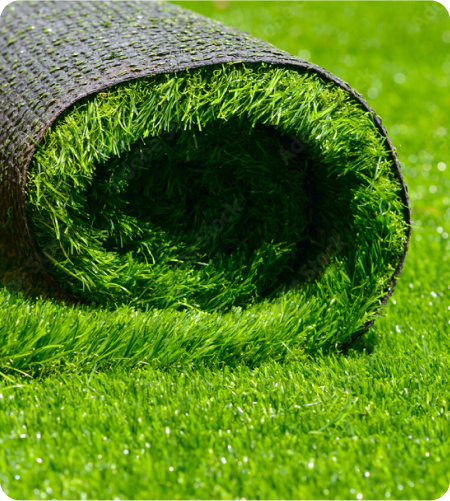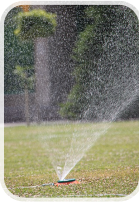Artificial Grass Cost – a Comprehensive Guide
In the mid-1960s, artificial grass, initially known as “AstroTurf,” emerged as a groundbreaking innovation for baseball, football, and soccer fields.
This versatile surface has expanded into residential settings, dog parks, children’s play areas, mini-golf courses, and more. This guide will discuss the factors influencing the artificial turf installation costs over grass cost and why you might consider it over natural grass.

Reasons to Choose Artificial Grass
When Weighing the Artificial Grass Cost, Consider These Potential Benefits:
Improved appearance
Artificial grass can look better than a natural lawn with a green curbside appearance.
Reduced water usage
Save money on your water bill by not needing to water your lawn.
Time savings
Eliminate the need for time-consuming lawn care tasks.
Safety
Avoid using potentially harmful chemicals for lawn maintenance.
Ideal Locations for Artificial Grass Installation
Synthetic grass can be installed in various settings, including:
- Pool decks and patio areas.
- Front and back lawns.
- Rooftop patios with limited access to water or mowing.
- Event spaces where real grass may be easily damaged.
- Indoor or outdoor putting greens.
- Window Displays Hard to grow in shady areas.

Artificial Grass Cost Breakdown by Type

Artificial grass cost per square foot varies, with expenses covering materials, material and labor costs, preparation, installation, and cleanup. While natural grass may initially be cheaper, artificial grass can prove more cost-effective over a decade. For a 500-square-foot artificial lawn installation, consider the following.
Artificial Grass
$13 sqft, totaling $6,500
Annual maintenance cost: $500
costs after 10 years: $6500
Natural Grass
$200-$500
Annual maintenance cost: $840
costs after 10 years: $8600
Artificial Grass Vs. Natural Grass
While artificial grass cost may seem steep upfront, it offers several advantages:
Low maintenance
No mowing, watering, or weed control is needed
Safety
Suitable for children and pets.
Weather resilience
Unaffected by temperature extremes or environmental changes
Year-round greenery
Lush and green appearance throughout the year.
Pest and damage resistance
Repels insects, deterring digging, and withstands high traffic
Design flexibility
Ideal for unique designs, both indoors and outdoors.
Considering the typical price range of artificial grass cost and its advantages, it's essential to delve deeper into the specifics of natural grass lawns only. This comprehensive guide will help you understand the different types of artificial grass, installation methods, maintenance, and environmental benefits.

Types of Artificial Grass
Artificial grass comes in various types, each with distinct characteristics and price points.

Landscape Turf
Designed to resemble natural grass, landscape turf is ideal for residential and commercial applications. This type of artificial grass is soft, durable, and available in various shades to match your desired aesthetic.

Sports Turf
Sports turf is engineered to withstand the wear and tear of athletic activities. It's crucial for playing fields, such as soccer, football, and baseball, providing a consistent playing surface and reducing the risk of injury

Pet Turf
Pet-friendly artificial grass is designed to be durable, resistant to odors, and easy to clean. This type of turf typically has shorter turf blades, allowing pet waste to be quickly rinsed away and easy to clean. A pet deodorizer infill should be placed as an infill. A spray is also available.

Putting Green Turf
Ideal for golf enthusiasts, putting green turf provides a smooth, consistent surface that mimics the feel of a professional golf course.

Playground Turf
Playground turf is designed to be safe, durable, and comfortable for children's play areas. This type of artificial grass often features a padded underlayer for added safety and shock absorption.
Installation Methods
The installation method can significantly impact artificial grass cost. There are two primary methods to choose from:
DIY Installation
Installing artificial grass yourself can save money on labor costs. However, it requires considerable time, effort, and the proper tools. If you're not experienced in landscaping, you may encounter challenges during installation.
Professional Installation
Hiring a professional to install your artificial grass ensures a flawless result. Professionals have the necessary tools, skills, and experience to complete the job e"ciently. Although this option comes with a higher cost, it provides peace of mind and often includes a warranty
Maintenance and Care
One of the main advantages of artificial grass is its low maintenance requirements. Here are some essential maintenance tasks:
Brushing
Regularly brush your artificial grass to keep the fibers upright and prevent matting. Use a sti!-bristled broom or a specialized brush for the best results.
Debris Removal
Remove leaves, twigs, and other debris from the surface to keep it looking clean and well-maintained.
Stain and Spill Cleanup
Clean up spills promptly to prevent stains. Most artificial grass types can be easily cleaned with water and mild soap.
Weed Contro
Although weeds rarely grow through artificial grass, they may sprout along the edges. Remove weeds manually as needed.
Environmental Benefits
While the artificial grass cost may be a factor, it's essential to consider turf cost and the environmental benefits it offers:

Water Conservation
Artificial grass requires no watering, helping you conserve water and reduce utility bills. This is particularly crucial in drought-prone areas where water usage is restricted.

Chemical Free Maintenance
With artificial grass, there's no need to use harmful pesticides, herbicides, or fertilizers, creating a safer environment for you, your family, and local wildlife.

Reduced Emissions
Since there's no need for mowing or trimming, artificial reduces carbon emissions by eliminating the need for gas-powered lawnmowers.
